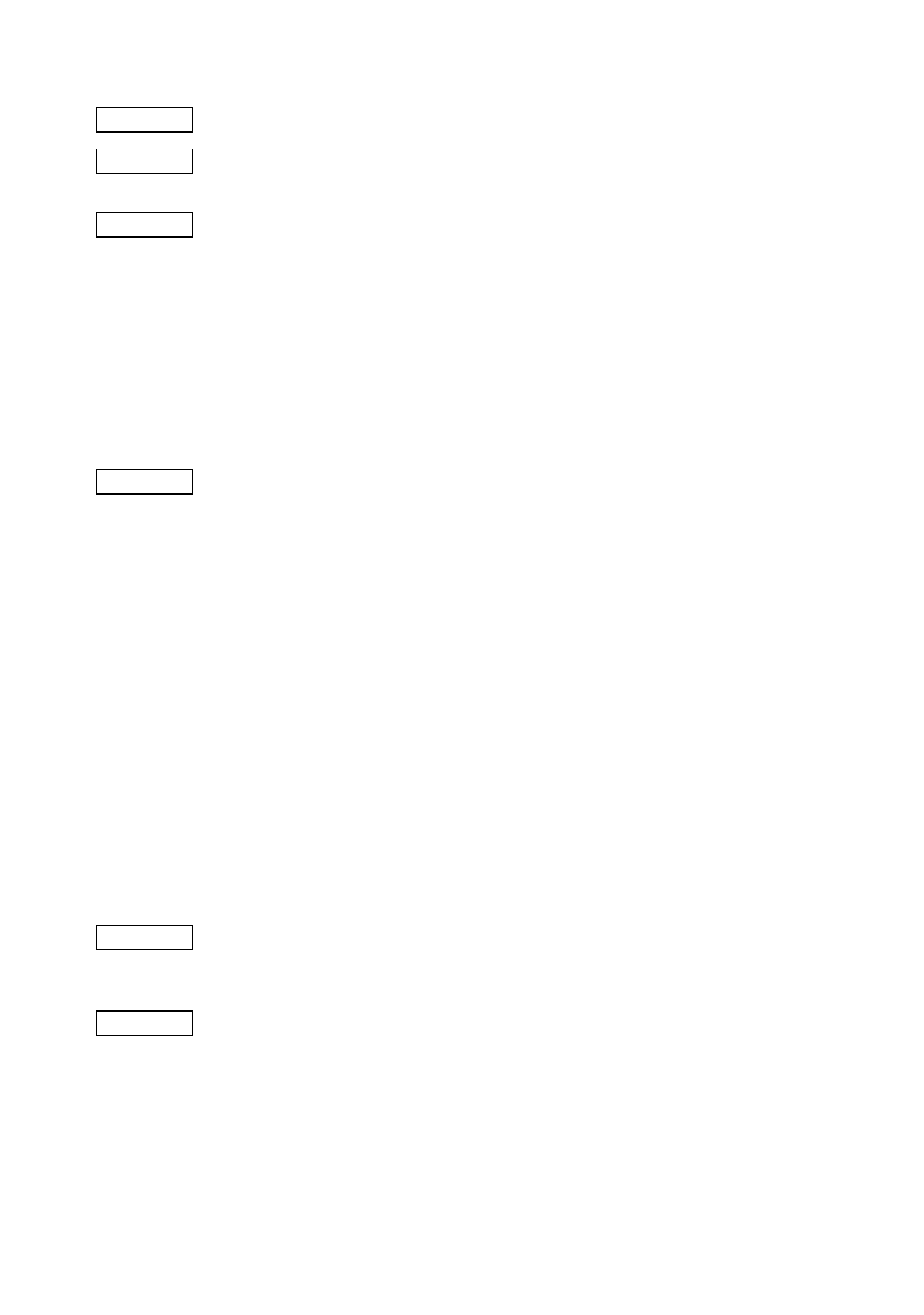
- 133 -
6.3.18 MEMORY BOARD FORMAT COMMAND [ESC] J1
Function Formats (initializes) the flash memory board for storage.
Format [ESC] J1; a (, b) [LF] [NUL]
Term a: Formatting (initializing) range for flash memory
A: All area
B: PC save area
C: Bitmap writable character storage area
D: True Type area
E: Basic file area (Reserved for future)
b: Drive (Omissible, If omitted, flash ROM on the CPU board is selected.)
0: Flash ROM on the CPU board
1: Flash ROM on the memory board (Option)
2: Flash ROM on the memory board (Option)
Explanation (1) 1, 2, 3, 4, 6, 8 MB flash memory board can be formatted.
(2) The flash memory board can be roughly divided into the PC save area and the
writable character storage area. They can be formatted (initialized) either
separately or at the same time.
(3) When using a new flash memory board, the area to be used must be formatted
(initialized) before the PC interface command is saved or writable characters are
stored.
(4) After formatting the flash memory board, the remaining memory is the PC save area
and writable character storage area.
(5) When the flash memory board is used and the already stored data (PC interface
commands, writable characters, logos) is stored again, memory is consumed with
every storing unless the Format Command ([ESC] J1) is transmitted.
(6) When performing the label issue operation after sending the Memory Board Format
Command, the image buffer is automatically cleared.
(7) When storing of writable characters, logos, or PC interface commands is not
continued, the printer automatically enters the online mode (label issue operation)
after about 10 seconds. In this case, the image buffer is automatically cleared.
Refer to • Bit Map Writable Character Command ([ESC] XD)
• Save Start Command ([ESC] XO)
• Save Terminate Command ([ESC] XP)
Example [ESC] J1; A, 1 [LF] [NUL]


















